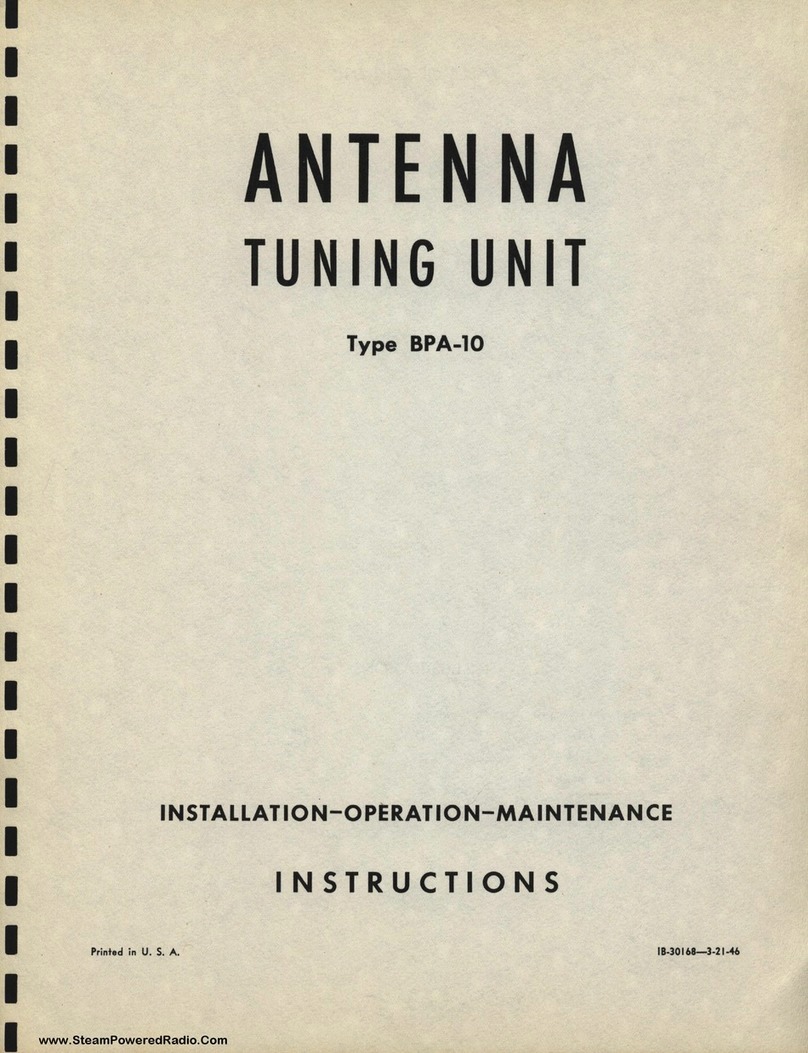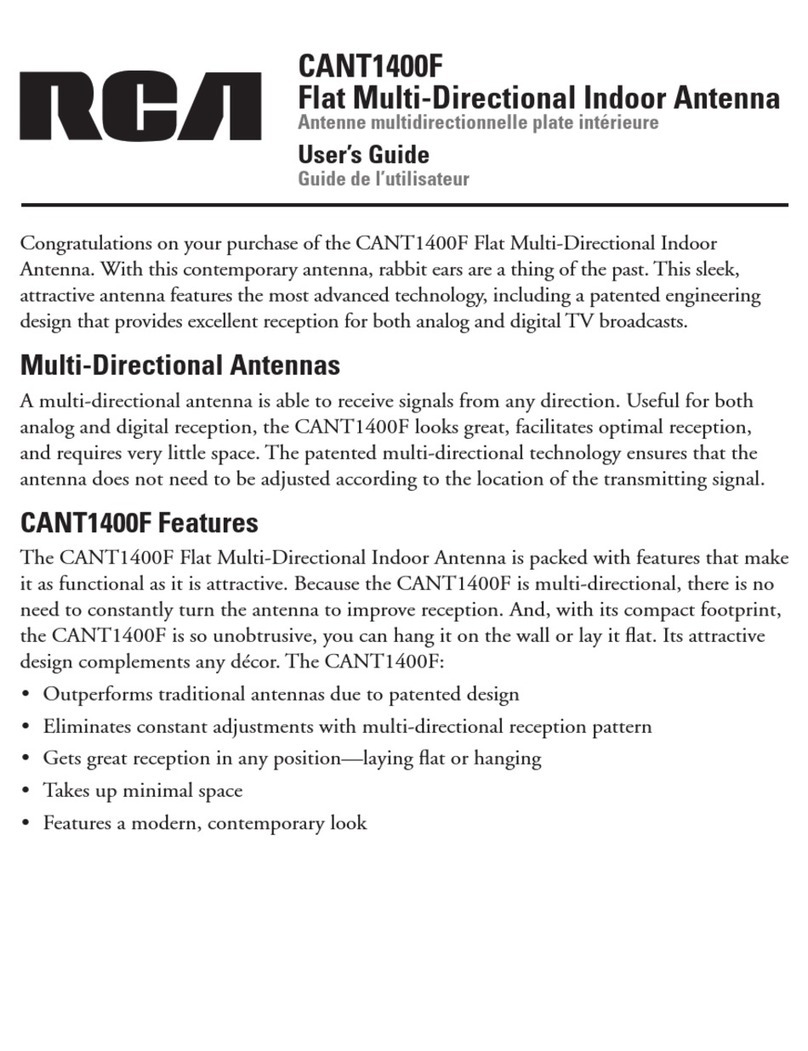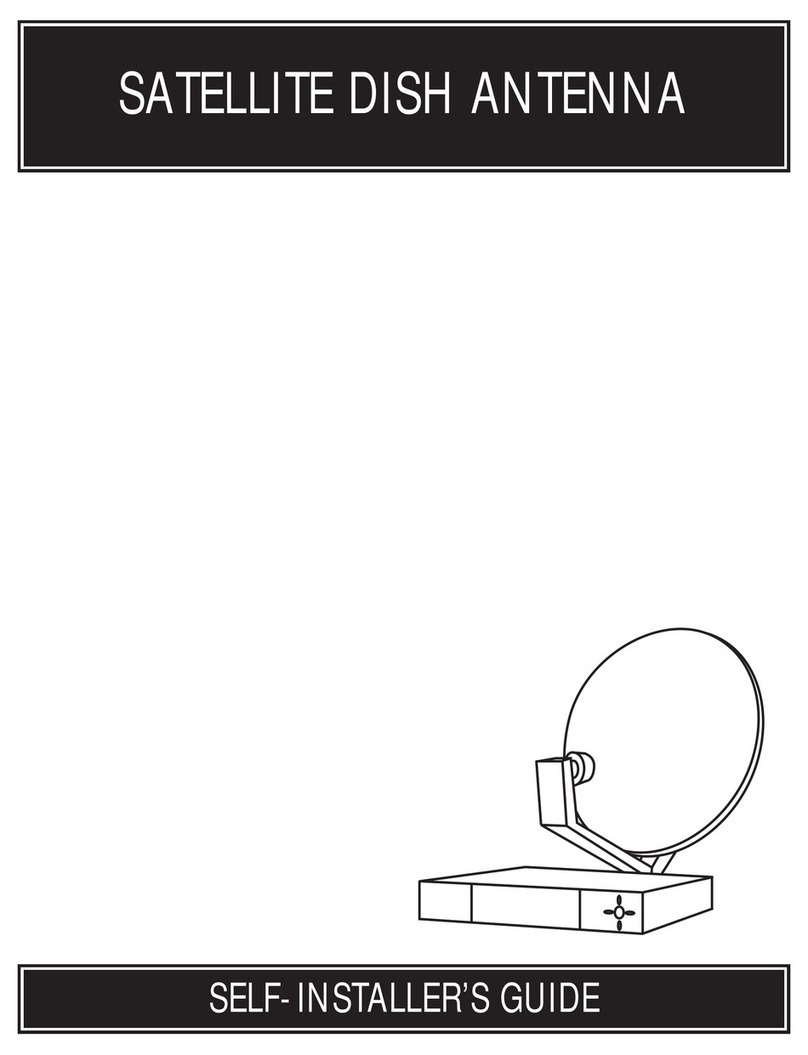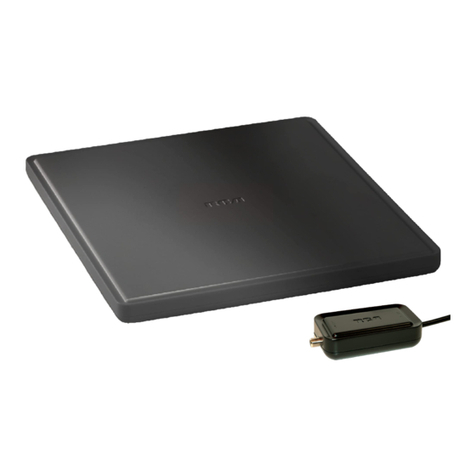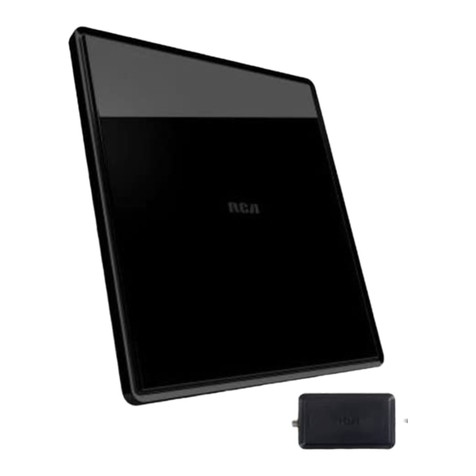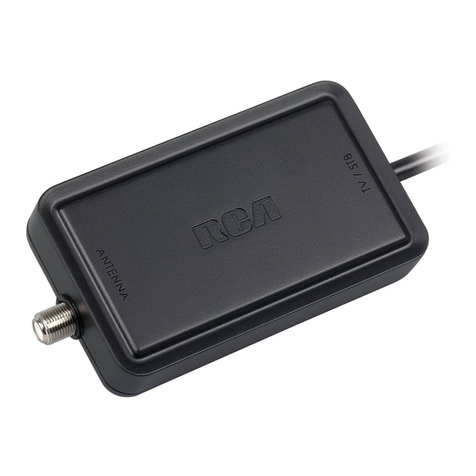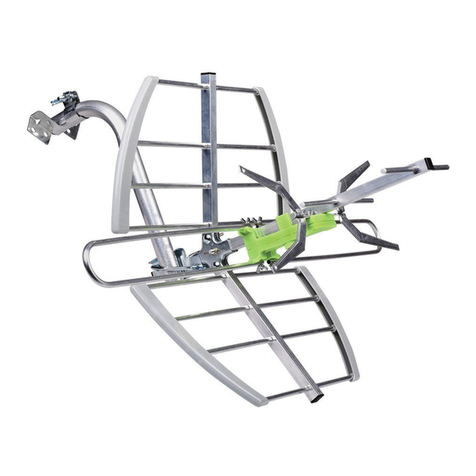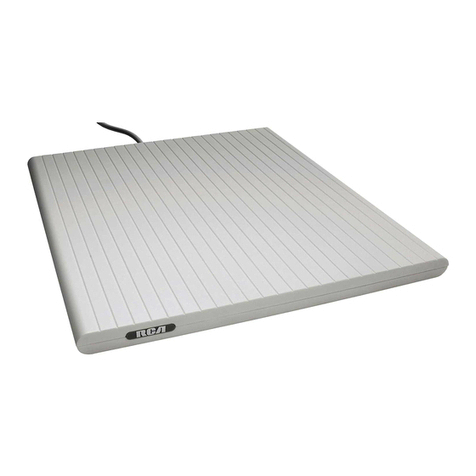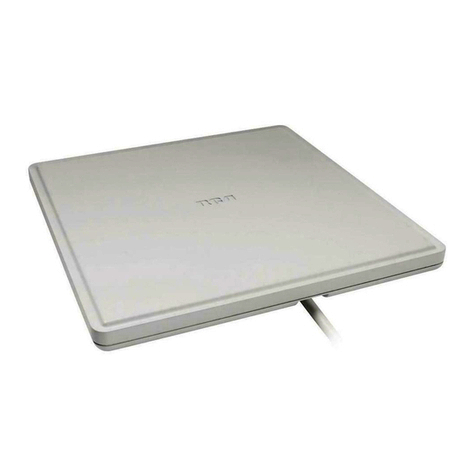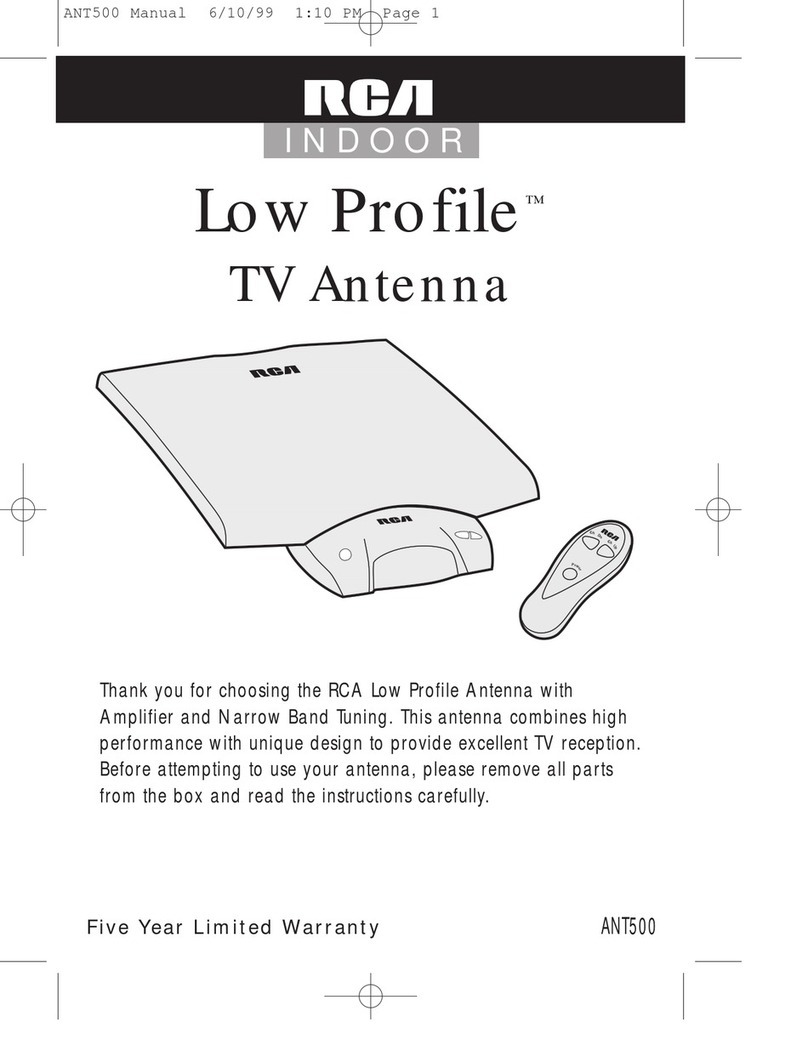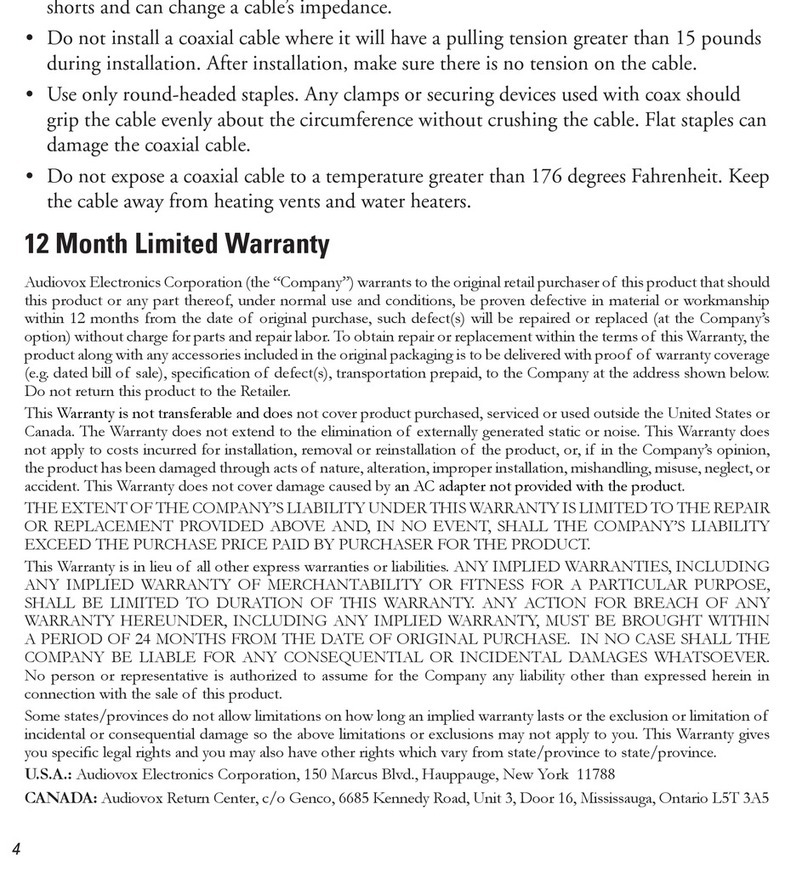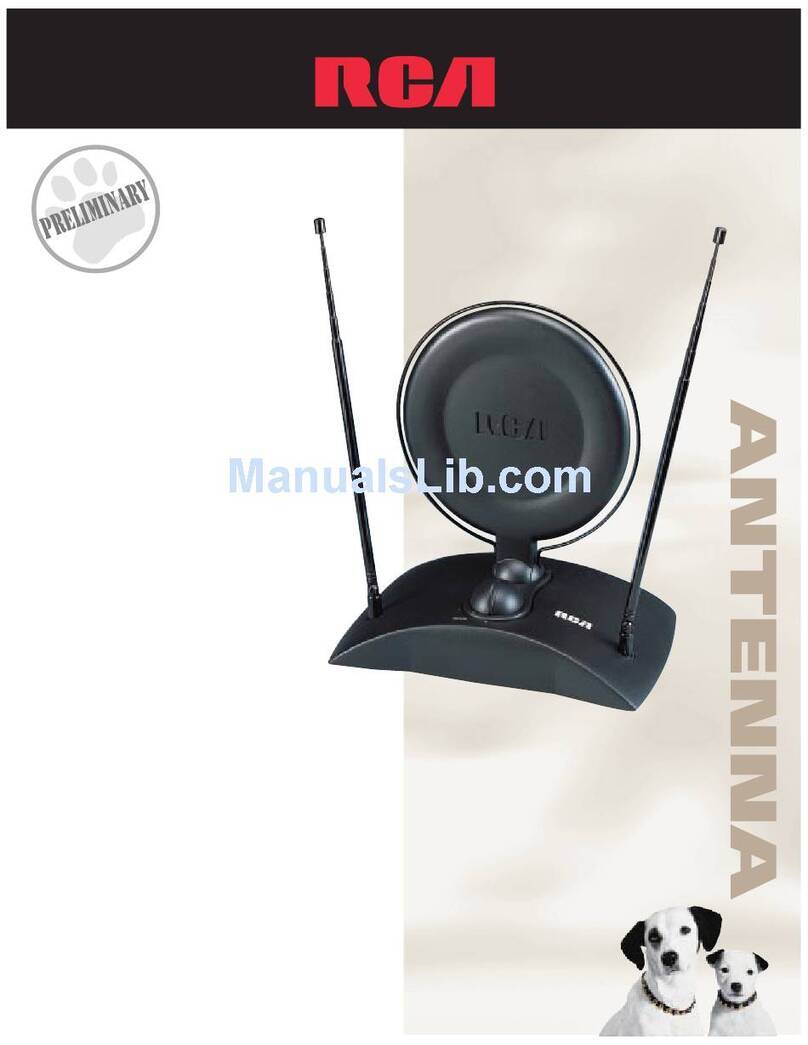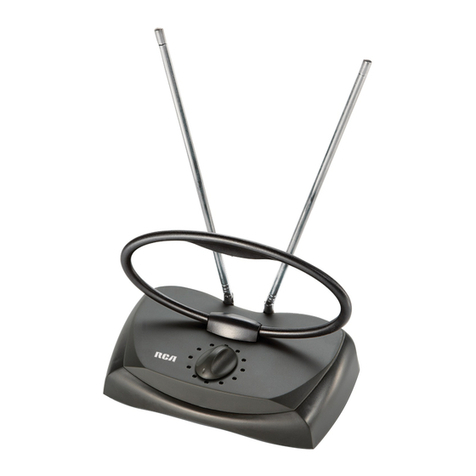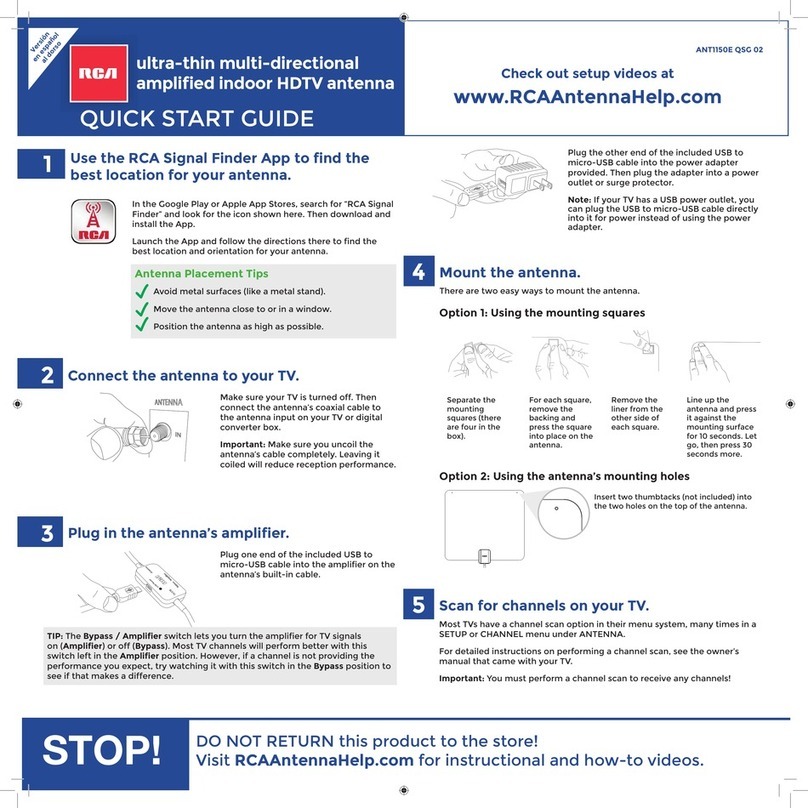
Safety Information
ACTIVATION OF PROGRAMMING MAY BE SUBJECT TO CREDIT APPROVAL AND REQUIRES VALID SERVICE ADDRESS, SOCIAL SECURITY
NUMBER AND/OR MAJOR CREDIT CARD. DEPOSIT OR PREPAYMENT MAY BE REQUIRED. Programming subject to change. You must be
physically located in the U.S. to receive DIRECTV service. DIRECTV services not available outside the U.S. DIRECTV programming is sold separately
and independently of DIRECTV System hardware. A valid programming subscription is required to operate DIRECTV System hardware. Activate your
DIRECTV programming today at 1-800-DIRECTV (1-800-347-3288). Receipt of DIRECTV programming is subject to the terms of the DIRECTV Customer
Agreement, a copy is provided at DIRECTV.com and with your first bill. DIRECTV, the Cyclone Design, and the EZALIGN logo are trademarks of
DIRECTV, Inc., a unit of Hughes Electronics Corp., and are used with permission.
DANGER! Avoid Power Lines! When following the instructions in this guide to install and connect the
DIRECTV®satellite dish and connections, take extreme care to avoid
contact with overhead power lines, lights and power circuits. Contact
with power lines, lights, and power circuits may be fatal.
CAUTION Before connecting the satellite receiver, read the Safety Information that
came packed with the satellite receiver.
Outdoor Dish The outdoor dish antenna used to receive satellite signals and the
Antenna Grounding cable used to connect the outdoor dish antenna to the indoor receiving
unit are required to comply with local installation codes and the
appropriate sections of the National Electrical Code (NEC), especially
Articles 250, 810 and 820. These codes require proper grounding of the
metal structure of the outdoor dish antenna and grounding of the
connecting cable at a point where it enters the house (or other building). If
you are having a professional installer make the installation, the installer
must observe installation codes in making the installation. The Satellite
System Self-Installer’s Kit contains instructions on how to make the
installation in compliance with the National Electrical Code (NEC). If
additional local installation codes apply, contact local inspection
authorities.
Compliance with Before installing the satellite system, check the electrical code
National Electrical Code guidelines in your area.
Note to Satellite Dish Installer This reminder is provided to call your attention to articles 725-61, 810, and
820 of the 1999 National Electrical Code. Refer to article 810, in particular
to 810-1 and 810-15, for required grounding of the metal structure of the
Dish Antenna. Refer also to 810-2 which, by reference to article 820,
requires that the satellite dish coaxial cable shield be connected to the
grounding system of the building as close to the point of cable entry as
practical.
Restrictions Before installing your dish, check the zoning codes, covenants and
community restrictions in your area. Some rules prohibit installing large
satellite dishes, but may allow small ones. Also, there may be restrictions in
your area that limit the mounting height of dishes.
If you encounter homeowner or community restrictions, call
1-800-679-4776. Personnel at this number can provide information that may
be helpful when attempting to obtain permission to install a satellite system
on your property.

